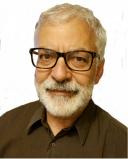Beauty
Belle’s Psychotherapy (Beauty and the Beast)
Tantalizing others makes them savage.
Posted March 2, 2021
Belle would joke that her husband was uncivilized when she met him, a regular caveman. She would tell her friends at dinner parties that she had to teach him how to wait until others were served before digging in. Adam would grin, but inwardly he seethed.
They had met when she was waiting for an Uber outside a club late one night and Adam pulled up on his motorcycle and offered her a lift. Belle savored the shocked reactions of her preppy friends when she climbed on behind the bearded biker.
He detoured to a sketchy neighborhood, then hopped off saying he’d be right back. Belle was furious about being left stranded but was more afraid to walk away than to cling to the bike, so that’s what she did. Adam was scoring meth, and when they got to Belle’s campus digs, Adam didn’t ask to come in, because he was more interested in the meth at that moment.
Eventually, they hooked up when he showed her his tender side and she showed him her friendly side, but they always had explosive fights when she would complain about his not having a real job. “You live like a prince,” she’d say, and this led to her taunting him by calling him Prince, and eventually this deteriorated to nicknaming him, “Formerly Known.”
Adam would call her the “damsel,” accusing her of constantly wanting more excitement in life than it could offer. Adam had quit meth, but Belle began using it, along with cocaine, and there was no way of hiding the fact that she would have sexual escapades when high. She wasn’t addicted, but she was something of a devotee.
Things bottomed out for Belle when she found out that her friends were getting together without her. She had thought she was the life of every party, not its downer. She went on a binge and ended up in detox with a therapy referral to Dr. Reality.
Dr. Reality was a little surprised by Belle’s authenticity in wanting help. And he was surprised to find that he believed her when she said she wasn’t having much difficulty staying clean and sober. She said she still wanted to get high, but she didn’t crave it.
They quickly agreed on a case formulation depicted by a childhood memory in which Belle was sad in her room, presumably about her mother’s death, while her father was tinkering as usual in his workshop in the basement. Her neediness made him angry, as it presumably interfered with his efforts to distract himself from his own grief and responsibilities, and his assumption that she would be a good girl and wait in her room infuriated her. She started tinkering on her own. This one time, she experimented by lighting tissues on fire and seeing if they would burn up entirely before hitting the wastebasket.
Enough half-burnt tissues accumulated in the wastebasket that at one point, they erupted in a burst of flames, and young Belle had screamed, “Fire!” Her father had rushed upstairs and put out the fire and then he hit her for the first and only time. There was a reddening on her face for several hours that she proudly displayed and that made him devote himself to her. As the color faded, so did the devotion.
When Belle was faced with an available drug, she had no parent in her head to ask if it was a good idea, but if she plunged in recklessly and got into trouble, that produced a caring figure, psychologically, to pick up the pieces. Dr. Reality proposed that they could discover what it was like to be in a relationship not organized around grief or conflagrations.
Their initial period of harmony immediately deteriorated into a series of challenges followed by moments of collaboration. Belle behaved seductively with Dr. Reality; since he saw her as the little girl burning up tissues meant for tears, he did not have any sexual urges for her.
Later, she acknowledged that what got her going was the fact that sex with a therapist is forbidden. Sex with her therapist would prove that nobody owns her. She wished there was a forbidden way to have sex with her husband. Dr. Reality said, “I imagine there are things you could do together that you wouldn’t want people to know.” This was as close as Dr. Reality ever came to giving advice. He believed that you can’t entirely erase your personality patterns, but you can act them out in contained situations and keep them from infiltrating your life.
Next, Belle tried to belittle him by pointing out that he wasn’t a “real” doctor (he had a doctoral degree in psychology), but Dr. Reality did not himself think his degree was second-rate, so he didn’t get defensive. He helped her disentangle her feelings and start to explore her own vocational wishes, which she often dismissed as second-rate.
He said at one point, “I think a lot of people on my side of this exchange might have gotten angry about your communicating that you could have done better in choosing a therapist. I wonder if this is a pattern of yours, you having one foot out the door and others grasping for you or getting mad at you, and you concluding that you should keep your options open because people are so angry and grasping?”
Not long after this period, Belle mentioned in passing that she had stopped belittling Adam’s job selling motorcycles, and in fact had told some friends that his customers really appreciate how knowledgeable he is. Dr. Reality said nothing, but he hoped that she was tinkering with appreciation rather than with distraction.
One day, Belle didn’t have time to do her hair before a session and let it fall in front of her face. Dr. Reality was perplexed by how angry it made him that he couldn’t see her eyes. He was so mad at her that he couldn’t think of anything to say that sounded the least bit therapeutic, so he fumed in silence. He thought maybe she hadn’t noticed his reaction, but the next session, Belle showed up with a new hairdo, cut with bangs, which she thought were cute and required less fuss than her long tresses had; the bangs were long enough that they half-covered her eyes. Again, Dr. Reality sat there steaming for the whole session, barely saying a civil word.
The third time, he just lost it, which for him meant that he rebuked her for coming to therapy with a haircut that kept him from seeing her eyes. Belle was shocked by his relative vehemence and began to cry. Dr. Reality first hoped that this was some kind of breakthrough, with real tears appearing, and then he hoped that she hadn’t noticed how pissed off he was, and then he remembered how, when he was in training, it could take him months to acknowledge his own behavior and its effect on patients, and that it was foolish to imagine that he could be spontaneous and improvisational and never do anything wrong.
His anger, he realized, did not signal the end of the therapy but its real beginning, a chance for reconciliation through proxies between the angry parent and the lonely girl. At that moment, Belle said, “I was only experimenting with new hairstyles,” and the word “experimenting” reminded Dr. Reality of the tinkering in their case formulation, so he said, “Wow. It’s like I hit you in the face.” He was tempted to say the bangs made him go bang, but for once he passed up a joke.
They went over the last few weeks together and processed what had happened between them, likening it to the story in the childhood memory. This went on for a session or two, and at last, Dr. Reality was ready to apologize, having fully heard the extent of the harm he had done. He said, “When I rebuked you, it felt like I wanted you to be obedient rather than authentic.” Belle looked surprised. She let her thoughts go on their own, and after a few minutes of silence, she said, “The funny thing was, my dad was trying to build a machine for chopping wood, and when he finally succeeded, it allowed him to take time in the morning to make me breakfast and eat it with me.” Dr. Reality said nothing, but he took this association as a sign that they were back on track.
After Dr. Reality took full responsibility for his own angry reactions, they could start exploring the bangs. Dr. Reality said at one point, “My rebuking you was beastly,” and Belle replied, “I have a way of turning men into beasts.” She added, “I hate the idea that anyone thinks they have me. People are at their worst when they want something that eludes them. I elude people and put them at their worst. Then I see them at their worst and I want to elude them.” Dr. Reality was pretty sure he had said something similar to her early on—tantalizing others makes them savage—but he was content to hear it from Belle. He believed they were co-authoring their relationship, not vying for credit.
For a year or so, Belle experimented with letting Dr. Reality “have” her, by attending sessions faithfully, by disclosing her secret thoughts, and by trusting him not to gloat about her dependability. Then, she explored what it was like to have herself, by living moderately, by asking herself what she wanted and whether there was a constructive way to get it.
The therapy ended. Belle reported that her friends liked her again, she was off drugs, she was looking for a more engaging job, and she and Adam were doing beastly, enjoyable things in bed and keeping them in the bedroom. Dr. Reality didn’t need to know the details.
In the last session, Belle said, “I read somewhere that Freud said therapy is the cure through love. I think he meant that it did me a lot of good that you have loved me as you have. But I think what really helped the most was that we created a space where it was safe for me to love you without my feeling captured. My love always felt dangerous until I loved you.”
For more in this series:




